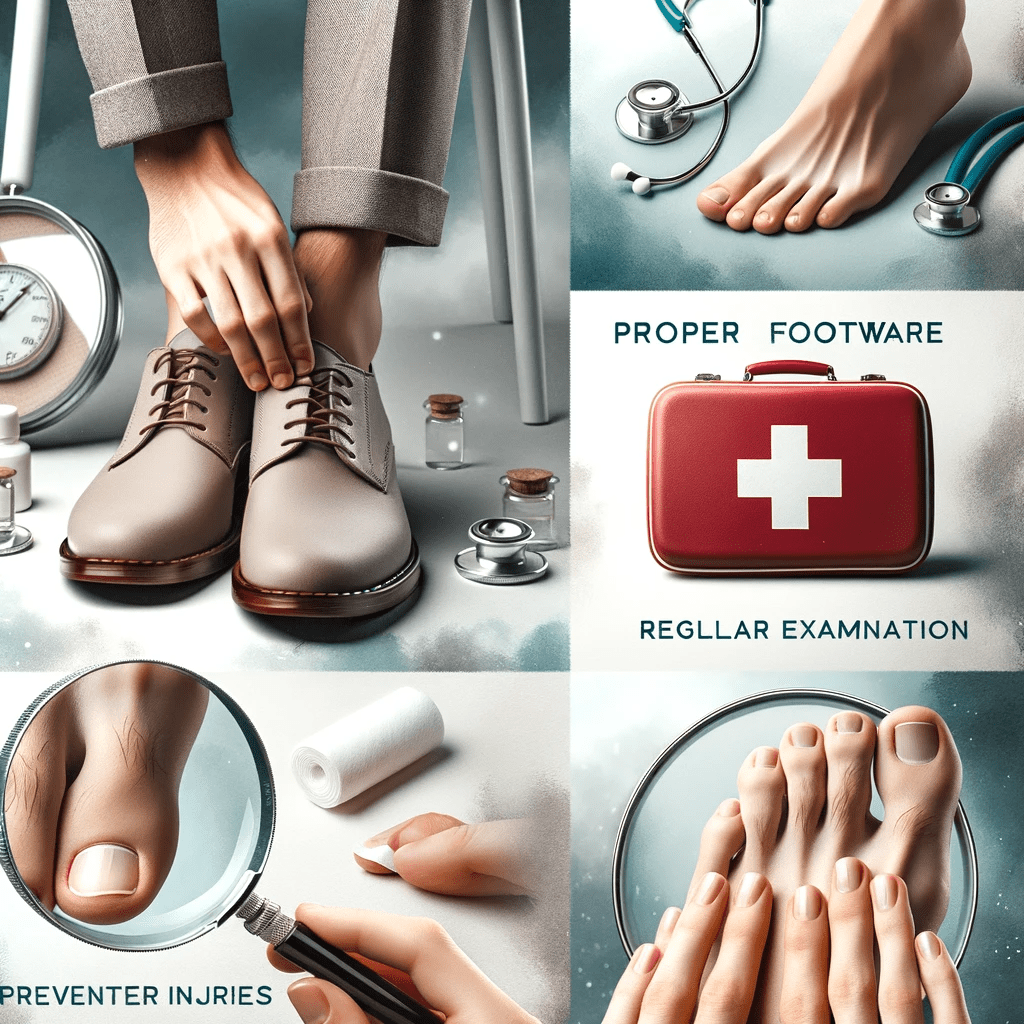Can Diabetes Be Cured by Walking: The Truth Unveiled
People have long recognized walking as an effective activity for managing diabetes. It brings various benefits, such as calorie burning, improved heart health, and enhanced insulin sensitivity. This article, Can Diabetes Be Cured by Walking: The Truth Unveiled, explores the potential of walking as a part of diabetes management, addressing topics like incorporating walking into daily routines, monitoring blood glucose levels, foot care, and providing additional resources and programs for assistance. Stay tuned to learn more about how walking can contribute to a healthier lifestyle for individuals living with diabetes.


- The Benefits of Walking for Diabetes Management - Can Diabetes Be Cured by Walking: The Truth Unveiled
- How to Incorporate Walking into Your Daily Routine - Can Diabetes Be Cured by Walking: The Truth Unveiled
- Monitoring Blood Glucose Levels while Walking - Can Diabetes Be Cured by Walking: The Truth Unveiled
- Foot Care and Safety Measures for Diabetic Walkers - Can Diabetes Be Cured by Walking: The Truth Unveiled
- Additional Resources and Programs for Diabetes Management - Can Diabetes Be Cured by Walking: The Truth Unveiled
The Benefits of Walking for Diabetes Management - Can Diabetes Be Cured by Walking: The Truth Unveiled
Regular physical activity, such as walking, plays a crucial role in managing diabetes and promoting overall well-being. Consistent walking offers diabetics multiple benefits: burns calories, manages weight, strengthens the heart, and improves insulin sensitivity.
Burning Calories and Managing Weight
Walking is an excellent way to increase physical activity and burn calories, which can contribute to weight management. Regular walks create a calorie deficit, controlling body weight and improving metabolic function. Additionally, walking can help build lean muscle mass, enhancing overall fitness levels.
Strengthening the Heart and Reducing Cardiovascular Risks
Regular walking strengthens the heart, improves circulation, and lowers cardiovascular disease risks in diabetes. Walking regulates blood pressure, lowers cholesterol, and reduces risks of heart attacks and strokes.
Improving Insulin Sensitivity
Studies show that walking improves insulin sensitivity, allowing the body to use insulin more effectively. This can help individuals with diabetes manage their blood sugar levels and reduce their reliance on exogenous insulin. By increasing physical activity through walking, the body's cells become more responsive to insulin, resulting in better glucose control.
By incorporating walking into your diabetes management plan, you can reap these benefits and enhance your overall health and well-being. Consult a healthcare professional before starting exercises, especially with diabetes-related concerns.


How to Incorporate Walking into Your Daily Routine - Can Diabetes Be Cured by Walking: The Truth Unveiled
You can easily integrate walking into your daily routine to contribute to managing diabetes. By setting realistic goals, finding the right time and duration for walking, as well as considering recommended pre- and post-walking snacks, you can make walking a beneficial habit.
Setting Realistic Goals and Monitoring Progress
Start by setting achievable goals for your walking routine. Consider your current fitness level and gradually increase the intensity and duration of your walks over time. Keep track of your progress to stay motivated and monitor improvements in your overall well-being.
Finding the Right Time and Duration for Walking
Find a time that suits your schedule and preferences for walking. It could be early morning, during a lunch break, or in the evening. Aim for at least 30 minutes of brisk walking most days of the week. Breaking it into smaller sessions throughout the day is also beneficial.
Recommended Pre- and Post-Walking Snacks
- Before walking, consider having a small snack that combines carbohydrates and protein, such as a piece of fruit with a handful of nuts or a yogurt cup.
- After walking, replenish your energy with a balanced snack, such as a banana with peanut butter or a vegetable and hummus wrap.
These snacks help provide the necessary fuel and aid in muscle recovery. Remember to maintain portion control and balance the nutritional content according to your dietary needs.
Monitoring Blood Glucose Levels while Walking - Can Diabetes Be Cured by Walking: The Truth Unveiled
Monitoring your blood glucose levels while engaging in physical activity, such as walking, is crucial for individuals with diabetes. Understanding the impact of walking on blood sugar and having effective strategies to manage glucose levels during exercise can help you maintain optimal blood sugar control. Here are some key considerations:
Understanding the Impact of Walking on Blood Sugar
Walking can have a positive impact on blood sugar levels in individuals with diabetes. It helps to improve insulin sensitivity, allowing the body to utilize insulin more effectively. As you walk, muscles require energy, which results in the utilization of glucose for fuel, leading to a decrease in blood sugar levels.
However, the impact of walking on blood sugar can vary from person to person. Factors such as duration, intensity, individual insulin sensitivity, and timing of exercise in relation to meals and medication intake can influence blood glucose responses. It is essential to be aware of your specific body's response and make necessary adjustments as needed.
Tips for Managing Blood Glucose Levels during Exercise
Here are some tips to help you effectively manage blood glucose levels while walking:
- Check your blood sugar levels before and after walking: Monitoring your blood glucose before and after walking allows you to understand how your body responds to physical activity. This information can help you make informed decisions about insulin dosages, snacks, or adjustments in medication.
- Carry a source of fast-acting glucose: Be prepared by carrying a source of fast-acting glucose, such as glucose tablets or candies, while walking. This will ensure you can quickly raise your blood sugar levels if they drop too low during exercise.
- Stay hydrated: Drinking water before, during, and after your walk helps maintain hydration and can aid in stabilizing blood sugar levels.
- Listen to your body: Pay attention to any signs of hypoglycemia or hyperglycemia during your walk, such as dizziness, shakiness, or excessive thirst. If you experience these symptoms, take appropriate actions, such as consuming glucose tablets or adjusting your insulin dosage, as recommended by your healthcare provider.
- Consider wearing a medical alert bracelet: Wearing a medical alert bracelet that indicates you have diabetes can be beneficial in case of an emergency during your walk. This can help alert others to your condition and ensure appropriate assistance is provided if needed.
By monitoring your blood glucose levels before, during, and after walking and implementing these tips, you can manage your blood sugar effectively while enjoying the benefits of regular physical activity.


Foot Care and Safety Measures for Diabetic Walkers - Can Diabetes Be Cured by Walking: The Truth Unveiled
When it comes to managing diabetes, proper foot care and regular examination are crucial for individuals who engage in walking as part of their exercise routine. Diabetic walkers need to pay special attention to their feet to prevent complications and ensure overall safety. Here are some essential considerations to keep in mind:
Importance of Foot Care and Regular Examination
Diabetes can lead to nerve damage and poor blood circulation in the feet, making them vulnerable to injuries and infections. As a diabetic walker, it is vital to prioritize foot care and examine your feet regularly. Here's why:
- Nerve damage, known as neuropathy, can cause loss of sensation in the feet, making it difficult to detect injuries or blisters.
- Poor blood circulation can impair the healing process and increase the risk of infections.
- Regular foot examination helps identify any abnormalities or early signs of foot-related complications.
To ensure proper foot care and regular examination:
- Inspect your feet daily, checking for any redness, swelling, cuts, blisters, or sores. If you have difficulty reaching your feet, use a mirror or seek assistance from a partner, family member, or healthcare professional.
- Wash your feet with mild soap and lukewarm water, taking care to dry them thoroughly, including between the toes.
- Apply moisturizer to keep your feet hydrated, but avoid applying it between the toes to prevent moisture buildup.
- Trim your toenails straight across to prevent ingrown nails. If you are unable to trim your nails safely, consult a podiatrist.
Choosing Proper Footwear and Checking for Injuries
The right footwear plays a vital role in protecting diabetic walkers' feet. Prioritize comfort, support, and proper fit when selecting shoes for walking. Consider the following:
- Choose shoes with a wide toe box to prevent crowding, reducing the risk of pressure points and blisters.
- Opt for cushioned socks that provide additional comfort and reduce friction.
- Try on shoes later in the day to ensure a proper fit when your feet might be slightly swollen.
- Inspect your shoes daily for any foreign objects, such as stones or debris, and ensure the soles are intact.
It's important to check your feet for injuries or abnormalities before and after each walking session. Look for any redness, irritation, sores, or changes in skin color. If you notice any concerning symptoms or have persistent foot issues, consult your healthcare provider or a podiatrist promptly.
Additional Resources and Programs for Diabetes Management - Can Diabetes Be Cured by Walking: The Truth Unveiled
Diabetes UK's Walking Challenges
If you're looking for some extra motivation and community support for your walking journey, consider participating in Diabetes UK's Walking Challenges. These challenges are designed to encourage individuals with diabetes to engage in regular physical activity, including walking. By joining these challenges, you can set personal goals, track your progress, and connect with others who share similar health struggles. It's a fantastic way to stay motivated, accountable, and actively manage your diabetes through walking.
Fitterfly's Diabetes Management Program
Fitterfly offers a comprehensive Diabetes Management Program that incorporates walking as a key element. This program is specifically designed to empower individuals with diabetes to take control of their health and effectively manage their condition. With the guidance of trained professionals, you'll receive personalized exercise plans, dietary recommendations, and continuous support to help you make lifestyle changes for long-term success. By including walking in your daily routine, you can enhance your diabetes management journey and improve your overall well-being.
Accessing Tools, Information, and Clinical Trials
When it comes to managing diabetes through walking, staying informed is crucial. There are several online resources and tools available that can provide valuable information and support. Websites like Diabetes.org and Mayo Clinic offer comprehensive guides on exercise and diabetes management, including the benefits of walking. Additionally, keep an eye on clinical trials in your area that focus on the relationship between walking and diabetes. Participating in such trials may provide you with access to cutting-edge research and potential breakthroughs in diabetes management.
Advocacy and Support for People with Diabetes in the US
Living with diabetes can be challenging, but you're not alone. Various advocacy groups and support networks across the United States dedicate themselves to assisting individuals with diabetes. Organizations such as the American Diabetes Association (ADA) and local support groups offer resources, educational materials, and opportunities to connect with others dealing with similar challenges.
Participating in these networks can provide you with a strong support system, helpful advice, and a sense of community as you navigate the complexities of diabetes management through walking. In conclusion, diabetes management can be greatly enhanced by utilizing additional resources and programs that support your walking routine.
By participating in Diabetes UK's Walking Challenges, enrolling in Fitterfly's Diabetes Management Program, accessing informational tools online, and seeking advocacy and support, you can optimize your diabetes management journey. Embracing the power of walking and availing yourself of these valuable resources can significantly contribute to your overall well-being and successful management of diabetes.


